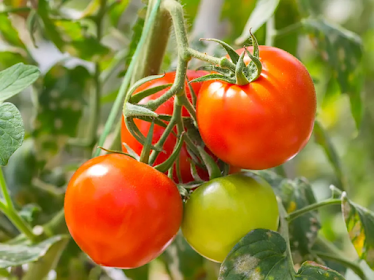PLANTING OUT, MAINTAINING, AND HARVESTING TOMATOES GROWN IN COCO COIR

HOW TO SOW TOMATO SEEDS IN POTS There are two main types of tomato: compact bush varieties, and larger cordon varieties. The latter grow better in large growing bags, 30cm pots, or in the ground, and will need to be staked for support. Bush varieties don’t need support as they grow much shorter and bushier. They can be grown in pots and hanging baskets easily. Tomato plants prefer slightly acidic soil, with an ideal pH of 6.0-6.8. They are also thirsty plants, requiring a good amount of water and lots of nourishment. Coco coir falls naturally within this pH range, is highly water retentive and absorbs nutrients well, making it an ideal substrate for thriving tomato plants. SOWING TOMATO SEEDS FOR HEALTHY GERMINATION As seedlings grow well at room temperature, around 18–21C, you can give them a good start by growing indoors during the earliest stages. If your seedlings are growing in a greenhouse, or similar temperature-controlled environment, y...

